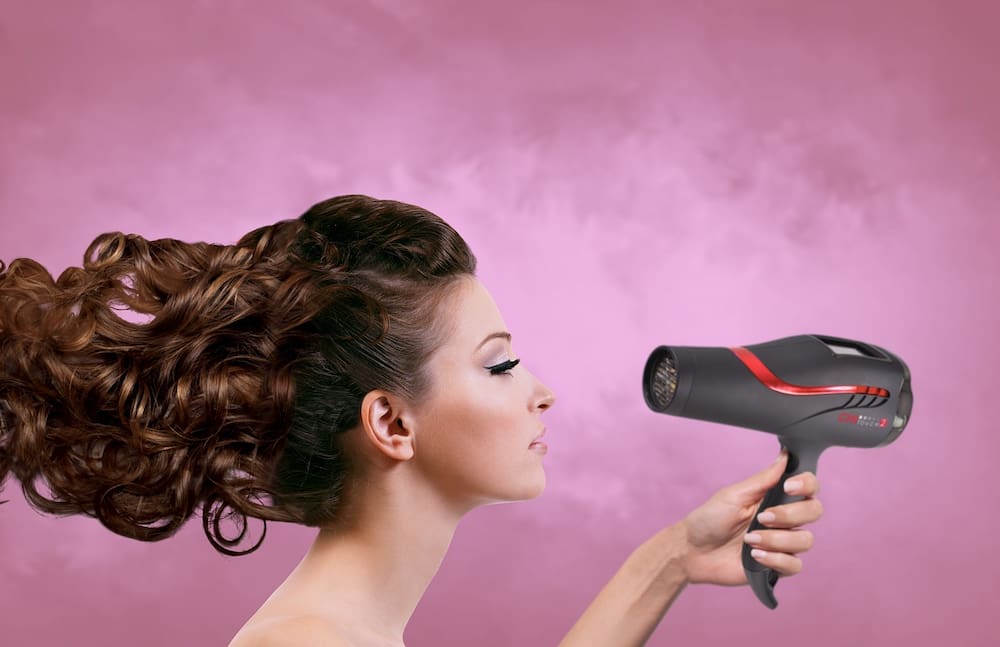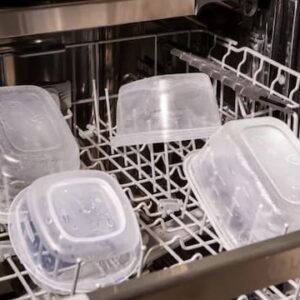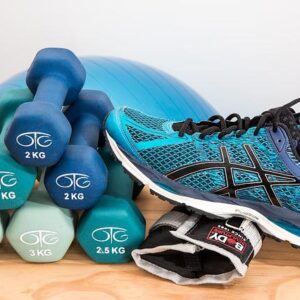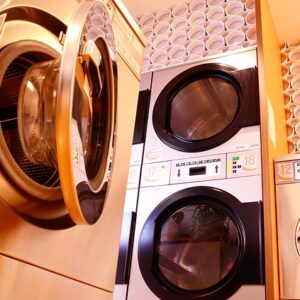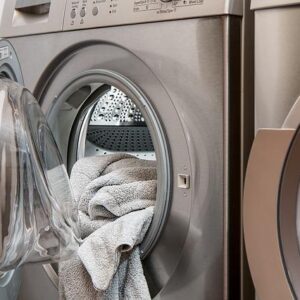Nobody can dispute how useful hair dryers can be in a pinch! However, everyone is aware that hair and high heat don’t mix.
Consequently, how hot does a hair dryer get? Hair dryers tend to heat up to between 80 and 200 degrees Fahrenheit (between 26 and 93 degrees Celsius).
You’re in the right place if you’re worried about what your hair dryer might be doing to your hair.
Knowing how hot a hair dryer can get is important because the risks associated with the majority of hair dryers depend on the unit’s temperature. We’ll tell you specifically that in this article.
Table of Contents
How Hot Does A Hair Dryer Get In Fahrenheit?
In general, Hair dryers tend to heat up to between 80 and 200 degrees Fahrenheit. Some blow dryer models have maximum heat settings that can reach temperatures of up to 250 degrees Fahrenheit; with such high heat, it’s important to learn the proper styling techniques to safeguard your hair and the skin on your scalp.
Unless you specifically need more heat, stylists recommend that you leave the temperature on a moderate-high setting. This method of styling will quickly dry your hair without causing any significant heat damage.
The speed of the fan and how quickly your hair dries, even without heat, are frequently correlated.
Because the process will take longer if the fan speed is low but the heat is maintained at its highest setting, your hair is more likely to burn.
How Hot Does A Hair Dryer Get In Celsius?
In general, hair dryers heat up to between 26 and 93 degrees Celsius. Some blower dryers have a maximum heat setting that can reach 121 degrees Celsius. The only variable that affects how quickly a hair dryer styles hair is how hot it gets; however, air speed is also a crucial element that interacts well with heat.
Factors That Affect The Temperature Of Your Hair Dryer
You should be aware of the various factors that might influence the temperature of your heat styling tool in order to stop this from happening.
Brand & Model
Especially given the wide variety of brands and models available on the market, picking the best hair dryer can be very difficult. Various heat settings are required for drying out various hair types. Use only medium heat settings if your hair is healthy. You have the option of using a ceramic dryer, which is renowned for its even heat distribution, an ionic dryer, which dries hair quickly, or a tourmaline dryer, which dries hair from the inside out using infrared heat. In order to select the ideal one, we advise conducting extensive research.
Never use a hair dryer at a setting where the palm of your hand would get too hot.
Wattage (Power)
You’ve likely noticed that the majority of hair dryers have a small number on them, like 1800 watts. What does that actually mean, though? Your hair dryer’s wattage is the measure of its power consumption. The higher the wattage, the more potent the blow dryer. Generally speaking, a blow dryer’s power increases with its temperature. Therefore, if you want a powerful blow dryer, choose one with a high wattage.
1800 to 1875 watts is the recommended range. But exercise caution: using too much power can be harmful.
Age & Use
It is common for a hair dryer to produce less hot air than it did when you first got it or after using it frequently. A hair dryer is an electrical device that produces heat within its internal parts, to start. Additionally, the hair dryer produces less heat when used at high temperatures. It does not also reach its highest temperature. Depending on the model, it will operate at its maximum temperature for a different amount of time.
Diffuser
Spreading the heat is the objective of a diffuser. In turn, this causes the heat emitted by a hair dryer to be evenly dispersed rather than concentrated in one area. Only one portion of your head is shielded from the full force of the hair dryer’s heat by the diffuser. The maximum temperature is rarely reached when using a diffuser, which distributes heat evenly.
Distance From Your Hair
Heat is more likely to diffuse in the area if there is more space between the hair dryer and the hair. Less heat enters the hair as a result. The temperature increases as the hair dryer is brought closer to your head. To test the temperature, hold the hair dryer a certain distance from your palm.
Which Heat Setting Is Best For Hair Dryers?
Should I heat my hair at a certain temperature? You should stick to the following general guidelines:
- You should use a hairdryer with a colder setting if you want to style your hair. Hair styling with lower heat is definitely easier. Given how quickly moisture evaporates in high temperatures, handling damp hair may be challenging. It is not advised to use heat on brittle hair.
- If you’ve ever used a hairdryer with adjustable heat settings, there is a fundamental rule you must follow. Denser hair can withstand higher temperatures while thinner hair needs cooler temperatures. But drying your coat on the lowest setting has always been good for your hair. It’s unlikely that the low temperature will harm your hair.
- If your hair is fine or delicate, try to blow dry more than half of it. After that, fully dry your hair with a medium-length hairdryer.
- 1200W to 1300W of voltage is ideal for fine hair. It is advised to use a setting of 1900W or higher for wavy hair.
- For natural curls, a blow dryer with a diffuser is ideal. Heat can now be distributed even more evenly, which is ideal for curly hair.
- For the first few seconds, choose a high heat setting and a quick speed, and then gradually lower the heat. Since more heat will indeed damage your scalp and hair, it is best to avoid even drying your hair at the highest temperature setting. Keep the blow dryer far enough away from your hair while drying it to prevent damage.
Can Hair Be Hurt By Blow Dryers?
The temperatures blow dryers can reach might not seem all that bad. After all, doesn’t direct contact with hair cause damage from heat styling tools?
That’s accurate, but blow dryer heat can still be harmful. Split ends, breakage, and lifeless, lifeless hair can all be results of the hot air from a blow dryer.
The Wattage Of A Hair Dryer: What Does It Mean?
You may have noticed a small number, such as 1800 watts, on your hair dryer. But what does that actually mean? Wattage is a measurement of how much energy your hair dryer consumes.
The blow dryer’s power increases with the wattage. Additionally, the blow dryer will become hotter in general the more powerful it is.
Therefore, if you want a blow dryer that has a lot of power (1800 to 1875 watts is ideal), look for one with a high wattage. Be careful though, as having too much power can be harmful.
What Is The Highest Wattage For A Hair Dryer?
3500 watts is the highest wattage blow dryer you can find online. When used improperly, blow dryers with this much power can harm hair. These dryers are designed for professional use in salons.
The most popular blow dryer has 1875 watts of power, which is more than enough for all of your hair styling requirements at home.
How Hot Is It Before Hair Burns?
The average temperature at which hair burns is around 450 degrees. However, depending on the type of hair you have, it might be lower. For instance, curly or kinky hair is less heat-damage resistant than Caucasian hair.
This is so because Caucasian hair contains more natural oil, which serves as a thin heat shield.
In general, healthier hair is more heat damage resistant. Therefore, you run the risk of burning your hair when blow-drying damaged, kinky, or unhealthy hair.
How To Prevent Hair Damage From Blow Dryers?
Knowing that blow dryers can damage your hair makes you wonder how to prevent the worst. Read the below prevention tips to learn how to ward off hair damage:
- Invest in a good blow dryer. Technology for temperature control and regulation is found in high-quality blow dryers. The dryer’s regulation technology prevents it from getting too hot, and the temperature controls give you access to a range of heat settings. Once the heat is kept at a low to moderate level, you can use these settings to maintain it.
- Use the right blow-drying technique. Aim the blow dryer down the length of your hair while holding it at least 8 inches away from your head. Use a diffuser attachment if you want to create a curly style.
- Apply a heat protectant before you get started. A barrier between your hair and the blow dryer heat will be helped by the product. Make sure to adhere to the instructions on the product you’re using. While other heat protectors can be used on dry hair, some should be applied to damp hair.
- Use the lowest effective heat setting you can. The cool setting may not always be hot enough to achieve a particular style. However, the likelihood that your hair will become compromised increases with increasing heat. Make use of a lower heat setting if you can blow dry your hair effectively that way.
- Every once in a while, give your hair a break from heat styling. Even when using a blow dryer on low heat, over-styling your hair can be damaging. Try taking a break from blow-drying your hair one or two days per week if you do it every day. Air-dry your hair on those days.
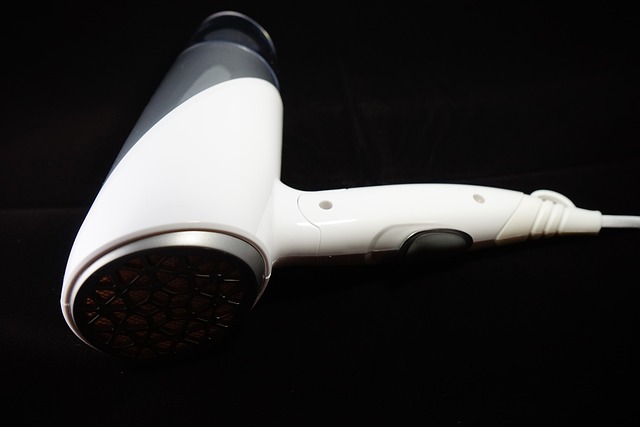
What Temperature Is Unsafe For A Heat Tool?
With blow dryers, flat irons, and curling wands, you can protect your hair by understanding how hot is too hot. Depending on the texture and health of your hair, you can determine what temperature it can withstand.
Thicker, healthier hair can withstand heat better than fine, damaged hair. Your hair is also more likely to react negatively to heat if it has already suffered damage from overprocessing.
The best way to determine what temperature is too hot for your hair is to experiment and observe how your hair responds.
When using a blow dryer, curling iron, or flat iron, start on the lowest setting and gradually raise the heat until you find the ideal temperature for your hair.
Instead of being dry, brittle, or fried, your hair should feel smooth and appear shiny. The heat is too high if you begin to see smoke or smell burning.
Undoubtedly, different blow-drying methods and temperatures are needed for various hair types.
For instance, people with curly hair may need to use a higher heat setting to straighten it, whereas people with fine hair may need to use a lower heat setting to protect the strands.
How Hot Does A 1875 Watt Hair Dryer Get?
You might believe that all hair dryers with only 1875 watts blow air cooler than dryers with 2000 watts or more, but this is not always the case. As a result, we must use general terms when addressing inquiries about how hot an 1875 watt hair dryer gets.
The general answer is up to about 200 °F but there are some 1875 watt hair dryers that get even hotter (up to about 250 degrees Fahrenheit). One “hot pick” is the blow dryer by Briggenius, 1875 Watt.
Because of how hot this hair dryer gets, it even has a BUILT-IN overheating protection system that will turn the 1875 watt blow dryer off when the heat temperature reaches 248 degrees Fahrenheit.
The blow dryer can be turned back on once it has cooled down. It keeps a fire from starting thanks to this safety feature, which many blow dryers lack.
How Hot Can A Hair Dryer With 2000 Watts Get?
To answer the question about how hot does a 2000 watt hair dryer get, in general the answer is still 200 degrees fahrenheit. We must respond to this question broadly because different 2000 watt hair blow dryer brands and models will have different heat outputs than other 2000 watt versions. So, as a general rule, we’ll stick with 2000 watts.
Contrary to popular belief, a blow dryer’s wattage does not necessarily determine how hot it will get.
In many cases, a higher wattage simply indicates that your hair dryer has more air speed and blowing power.
In spite of this, more heat can also be produced using the additional wattage power. It depends on how the dryer was designed to operate.
The typical wattage of hair blow dryers for home use is under 2200 watts, so if a blow dryer uses more than 2000 watts per hour, it can be referred to as a high wattage hair dryer.
A Conair Hair Dryer Gets How Hot?
The typical conair hair blow dryer heats up to nearly 155 degrees fahrenheit. When reading reviews that address the topic of how hot this Conair 1875 Watt Full Size Pro hair dryer with Ionic conditioning is, many people say that it isn’t that hot, while others state that it is quite hot. It’s a little perplexing, yes? Well…
This discrepancy should be expected because the Conair hair dryer is not a premium brand blow dryer like Rusk or Babyliss Pro and secondly, different people have varying heat tolerance or needs.
If you really want to know how hot a Conair hair dryer gets, you should check to see if your local salon has one so you can try it out (if they let you).
Although, if you have high-level professional salons in your area they probably only use elite brands like Babyliss, GHD and Rusk blow dryers.
See more about Can Shoes Be Put In The Dryer
How Much Hotter Can A Heat Gun Get Than A Blow Dryer?
The maximum heat level of a hair dryer is about 250 °F, whereas a heat gun’s maximum temperature is around 700°F and minimum heat-level is 150 degrees Fahrenheit.
It’s important to know how hot a heat gun gets if you’re thinking about trying to use a blow dryer to do the job of a heat gun. Even the hottest blow dryer won’t reach a quality heat gun’s temperatures.
The heat gun will also save you a lot of time, but this difference in heat will determine whether your shrink wrap looks professional.
By the way, it’s crucial to never use a heat gun for tasks that require temperatures lower than the lowest heat setting available on the particular heat gun model, which is typically around 150 degrees Fahrenheit or 65 degrees Celsius.
How To Dry Your Hair Without Damaging It
If you take precautions, you can dry your hair without harming it. After learning that blow dryers can harm it, read the following advice to find out how to prevent it.
Prepare Your Hair
If you must use a blow dryer, avoid doing so when your hair is completely wet. When exposed to hot air from a blow dryer, wet hair is more likely to frizz. Before using it, lightly towel-dry your hair if you’re in a rush. Avoid being rough with your hair when towel drying to prevent ripping out strands or damaging the shafts. If you have the time, let your hair air dry for at least fifteen minutes after using a towel. By doing this, you can dry your hair naturally before using heat.
Use Hair Protection Products
Avoid subjecting your hair to excessive heat when using a hair dryer to dry or curl it. Utilize a lotion or spray designed specifically to protect your hair from heat damage. Different types of hair respond favorably to these products. Consult a specialist to determine which product is best for your hair because there are so many on the market. You can further safeguard your hair by getting a deep conditioning treatment from a stylist.
Avoid Using Heat Tools On High Heat
Keep your hair dryer’s heat setting from being high. Setting your dryer to high seems like the obvious choice when time is of the essence. Your hair might end up lifeless and frizzy as a result, though. If you use this as your go-to morning solution, the harm will only increase. Maintain the health and beauty of your hair by using the lowest setting or hair dryers equipped with temperature control technology.
High-quality blow dryers come with built-in temperature controls and regulating technology. The dryer’s regulating technology prevents it from overheating, and the temperature controls give you access to a range of heat settings.
Partially Dry Hair
It’s important to know how to dry your hair properly when using a hair dryer. Prior to beginning to dry that section, divide your hair into portions and clip it away. Dry teeny-tiny sections of hair from the segment starting at the neckline. Move the hair dryer in broad strokes to prevent drying out a particular spot. Partitioning your hair can help you finish with a more polished appearance and reduce drying time. This not only saves you time in the morning, but it also minimizes the amount of time your hair is exposed to the blast zone.
Use The Proper Hair Dryer Tools
Each tool is different in its specifications and capabilities. The most efficient nozzles are those that come with the dryer. Frequently, wild hair is caused by using the wrong nozzle and brush. Using the right blow dryer is more important. Some hair dryers don’t have the precise control necessary to maintain healthy hair.
Completely Dry Hair
You should make a decision as soon as you start blow-drying your hair. If your hair is flat and frizzy, the excess moisture was not completely evaporated by the hair dryer. For best results, let your hair air dry until it reaches room temperature. You can move more quickly if you have the right tools, such as a high-pressure hair dryer and protective clothing. To speed up your process without rushing to the end, you can experiment with how you divide your hair into sections or switch to a microfiber towel.
Final Words
Err on the side of caution and begin with a lower hair dryer temperature setting if you are unsure of the ideal temperature for your hair. The heat can always be turned up if necessary.
Also keep in mind that using tools like curling irons, flat irons, and blow dryers requires caution.
Unlike flat ironing, blow drying doesn’t involve “direct heat.”
Due to this, many people use hair dryers carefree. But if you want your hair to flourish, you should use caution when using your blow dryer because they can get up to 140 degrees or higher hot.
Use your hair dryer as little as possible each week, on the lowest effective heat setting. Additionally, healthy hair needs attention and careful styling; perhaps it’s time to experiment with heatless looks like Bantu knots or twist-outs.
I appreciate you reading.

